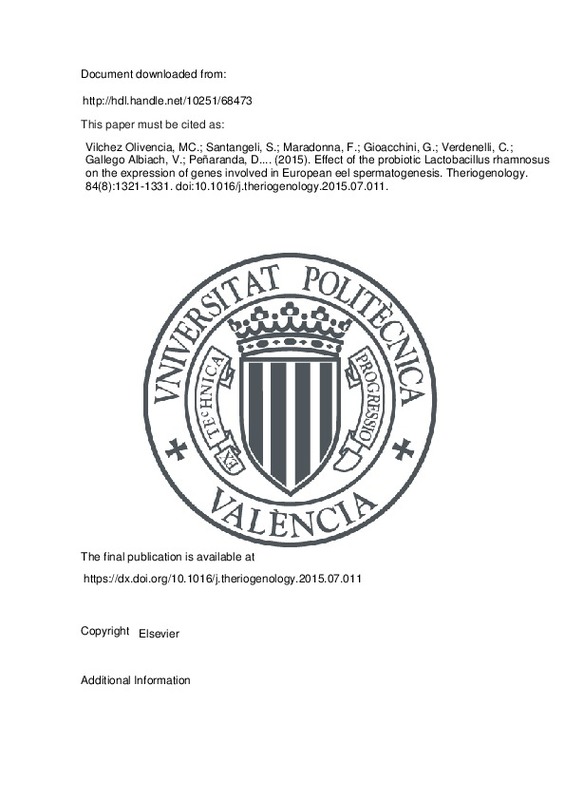JavaScript is disabled for your browser. Some features of this site may not work without it.
Buscar en RiuNet
Listar
Mi cuenta
Estadísticas
Ayuda RiuNet
Admin. UPV
Effect of the probiotic Lactobacillus rhamnosus on the expression of genes involved in European eel spermatogenesis
Mostrar el registro completo del ítem
Vilchez Olivencia, MC.; Santangeli, S.; Maradonna, F.; Gioacchini, G.; Verdenelli, C.; Gallego Albiach, V.; Peñaranda, D.... (2015). Effect of the probiotic Lactobacillus rhamnosus on the expression of genes involved in European eel spermatogenesis. Theriogenology. 84(8):1321-1331. https://doi.org/10.1016/j.theriogenology.2015.07.011
Por favor, use este identificador para citar o enlazar este ítem: http://hdl.handle.net/10251/68473
Ficheros en el ítem
Metadatos del ítem
| Título: | Effect of the probiotic Lactobacillus rhamnosus on the expression of genes involved in European eel spermatogenesis | |
| Autor: | Vilchez Olivencia, Maria Carmen Santangeli, Stefania Maradonna, Francesca Gioacchini, Giorgia Verdenelli, Cristina Tveiten, Helge Carnevali, Oliana | |
| Entidad UPV: |
|
|
| Fecha difusión: |
|
|
| Resumen: |
[EN] Positive effects of probiotics on fish reproduction have been reported in several species. In the present study, 40 male European eels were weekly treated with recombinant hCG for 9 weeks and with three different ...[+]
|
|
| Palabras clave: |
|
|
| Derechos de uso: | Reserva de todos los derechos | |
| Fuente: |
|
|
| DOI: |
|
|
| Editorial: |
|
|
| Versión del editor: | https://dx.doi.org/10.1016/j.theriogenology.2015.07.011 | |
| Código del Proyecto: |
|
|
| Agradecimientos: |
This study was funded by the European Community’s 7th FP (grant agreement no. 245257, PRO-EEL) and COST Office (Food and Agriculture COST Action FA1205: AQUAGAMETE)
Victor Gallego and M. Carmen Vilchez have predoctoral ...[+]
|
|
| Tipo: |
|







![[Cerrado]](/themes/UPV/images/candado.png)


